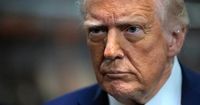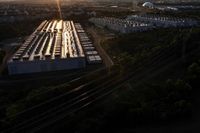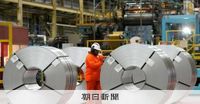President Trump has outlined plans to implement reciprocal tariffs on April 2, 2025, a bold move aimed at countries that impose high tariffs on U.S. imports. This announcement, made public on February 13, raises crucial questions about the impact on international trade and domestic industries.
In a speech addressing the nation on March 5, Trump confirmed, "Reciprocal tariffs will be initiated on April 2." These tariffs will mirror the tax levels imposed by other countries on U.S. goods. As global trade dynamics shift, the intention is to encourage trading partners to balance their trade barriers.
A senior official from the White House remarked, "The administration still intends to implement these tariffs unless trade barriers are reduced." The planning for this rollout has highlighted the complexities involved in adjusting tariff levels, as the U.S. Trade Representative (USTR) navigates through various trade regulations and retaliatory measures from other countries.
Concerns are mounting within the U.S. oil and gas sector, which has historically backed Trump with over $7.5 million in funding during the last election campaign. Executives from this industry voiced their apprehensions during a scheduled meeting with Trump at the White House on March 20, where they discussed the financial strains caused by new tariff rules. "Increased costs from tariffs are a significant concern for the industry," reported The New York Times.
The backdrop to these tensions is a 25% tariff on steel and aluminum products, which has been in effect since March 12, 2025. Industry leaders argue that these additional costs—which will inevitably be passed along to consumers—could jeopardize ongoing projects and overall profitability.
In light of the U.S. policies, the European Commission announced on March 19 its decision to reduce steel imports by up to 15% starting April 1, 2025. Sejurne, the Vice Chair of the European Commission, emphasized in a press conference, "We need to protect our steelworks from unfair competition from outside," indicating readiness to strengthen emergency import restrictions further.
As discussed, the USTR is reportedly facing challenges in designing these reciprocal tariffs because each of the 186 member countries of the World Customs Organization applies different tariff rates. This adds layers of complexity to enforcing effective and equitable trade measures.
While the USTR is preparing to announce the tariff structure, there is talk that affected countries might propose reductions in their tariffs and other non-tariff barriers in response to the increased costs prompted by U.S. tariffs.
The U.S. oil and gas industry, which heavily relies on equipment imported from Canada and Mexico, remains particularly vulnerable as plans for imposing tariffs of 25% on certain products from these countries loom just beyond April 2, 2025. As it stands, the industry is grappling to balance its supply chain while maintaining competitive pricing in an increasingly challenging market.
Analysts predict that if the projected tariffs materialize, the operating costs for data centers—which are heavily reliant on imported components—are likely to increase significantly, complicating financial projections and potentially leading to project delays.
Despite these looming tariff impositions, the U.S. administration's push for energy production and efficiency is on the rise. They argue that reducing energy prices can help offset the costs associated with these tariffs, with officials claiming that energy price cuts are crucial for sustaining competitiveness.
Looking ahead, it remains to be seen how these tariffs will reshape the landscape of U.S. industries against the backdrop of global supply chains. Executives from various sectors are calling for strategic negotiations to reduce the impending burden these tariffs would otherwise impose, ensuring a more stable trade environment.






